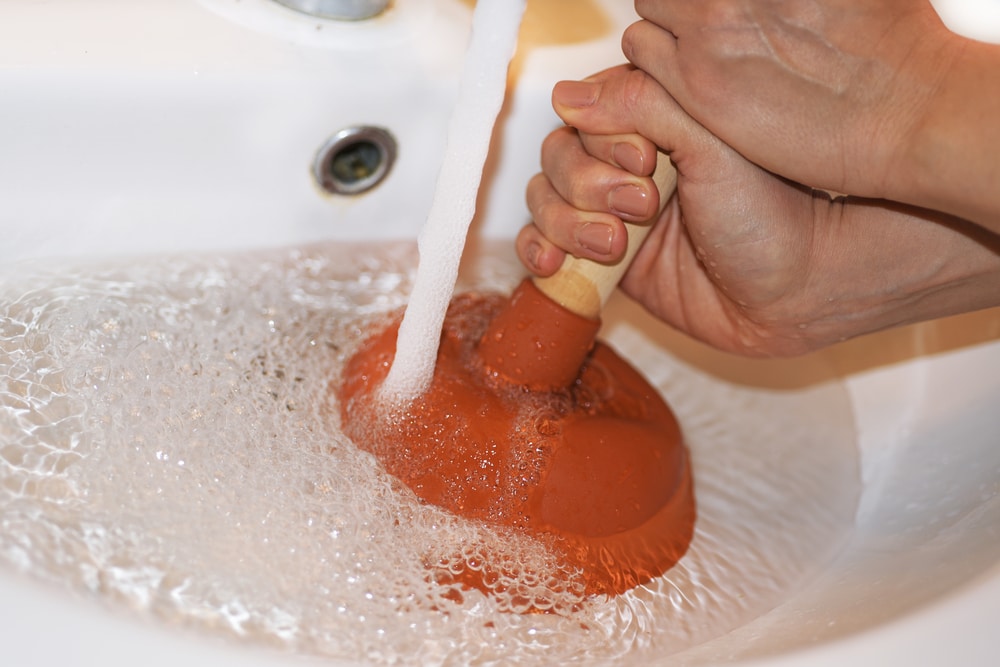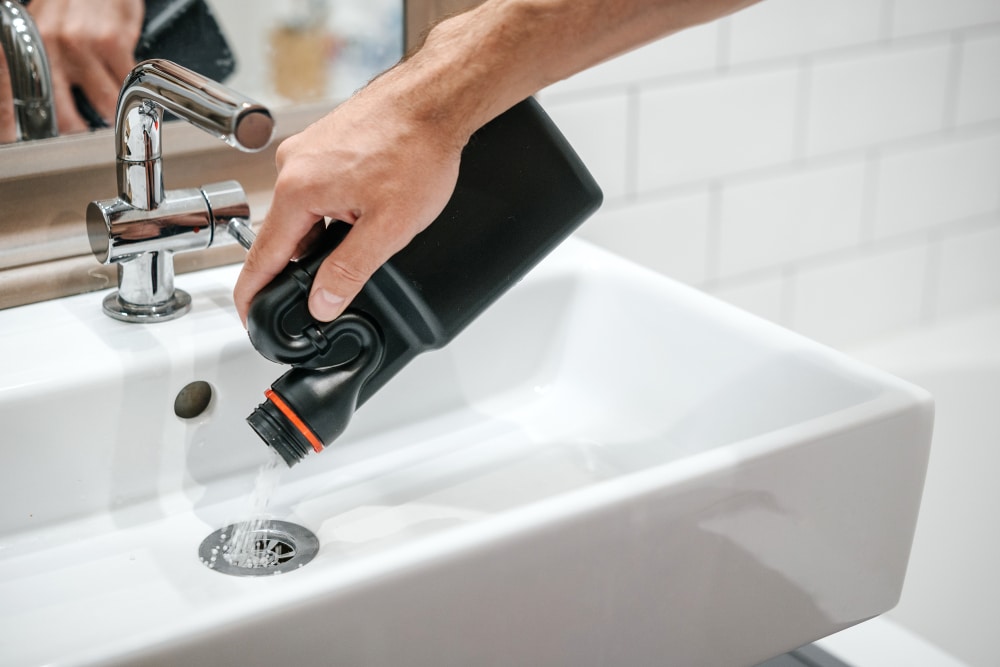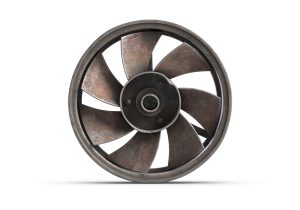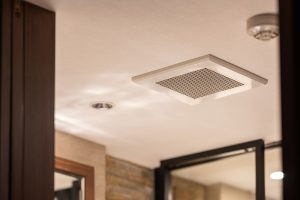How to Unblock a Bathroom Sink
A blocked sink in a bathroom can quickly become an issue if it is not addressed. But what causes a sink to be blocked? And what happens if it is not addressed?
In this blog, we will provide tips on how to unblock a bathroom sink, along with other ways to have a functional and comfortable bathroom.
With new buildings being made to be as energy efficient as possible, and the UK aiming for 95% of its electricity usage to be low carbon by 2030, it is imperative to understand how we can make the most of our ventilation. This is where applications such as extractor fans and heat recovery ventilation units come in.
To prevent mould, fresh air should constantly be introduced into your dwelling daily, as it helps to regulate temperature and reduce condensation. Introducing fresh air can be as simple as having a ventilation routine, or installing extractors or MVHR units. Almost all of this is facilitated by ducting.
How do sinks get blocked?

Bathroom sink blockages can arise from a war between what goes down the drain and what shouldn’t. Hair, the usual culprit, sneaks past the drain and accumulates, forming a nasty web that traps other debris like soap scum, toothpaste globs, and even cotton swabs.
This growing mass restricts water flow, causing a slow drain.
Grease and other oils, poured down the drain to disappear, solidify over time and worsen the clog by attracting more debris. Mineral build-up from hard water can also narrow the pipes, hindering drainage. Even tiny objects like jewellery or lost contact lenses can lodge in the U-bend of the drainpipe, causing a complete blockage.
Remember, your bathroom sink is not a bin, avoiding using it as such will keep your drain happy and healthy.
For good measure, it is always advisable to check your sink once every 2 weeks to ensure there is no debris or build-up that will otherwise contribute to a blockage. There are many items you can use to assist with this, from household items to specifically made products.
Do extractor fans affect a blocked sink?
Yes. To a degree, not having, or using, an extractor fan can be a contributor to a blocked sink. Although this is rare, mould can grow within the sink and its drain, if left to develop, it can impact the drainage of the sink.
An extractor fan can help to remove excess moisture that would otherwise be condensation, and eventually mould. So in this sense, an extractor fan can help to remove condensation within a sink that has the potential to become mould.
How else can I prevent mould in a sink?
Understandably, an extractor fan won’t remove or prevent mould all on its own, there has to be a degree of conscious ventilation control and drying surfaces. Ensuring your sink is dry after usage is key, particularly in the drain itself. Making sure it isn’t clogged in the first place makes it harder for moisture to become trapped.
How to unblock a bathroom sink

Here are a few methods you can try to unblock a bathroom sink drain, ranging from simple household items to other solutions:
Using a Plunger (for simple clogs)
- Close the overflow drain (if present): This overflow hole is usually located near the top of the sink basin. Plug it with a damp cloth to create a stronger seal and suction.
- Fill the sink with enough water to cover the plunger cup: Ideally, the water should reach just below the rim of the plunger cup.
- Position the plunger over the drain opening: Ensure a good seal is formed between the plunger cup and the drain.
- Plunge forcefully and repeatedly for 15–20 seconds: The plunging action should dislodge the clog.
- Remove the plunger and check the drainage: If the water drains freely, the clog is cleared. If not, repeat the plunging process or try another method.
Baking Soda and Vinegar (for mild clogs):
- Pour half a cup of baking soda down the drain.
- Follow it with a cup of white vinegar. The mixture will fizz as it reacts. This helps to loosen soap scum and debris.
- Let the mixture sit for 30 minutes to an hour.
- Flush the drain with hot water. See if the clog has been cleared. If not, you can try boiling water next.
Boiling Water (for greasy clogs):
- Boil a kettle of water.
- Carefully pour the boiling water down the drain. Be cautious of hot water splashes.
- Wait 15–20 minutes and then flush with hot tap water. The boiling water can help melt greasy clogs.
Commercial Drain Cleaner (as a last resort):
- Use a commercial drain cleaner only as a last resort and according to the product instructions. These chemicals can be harsh and damage pipes if not used properly.
- Wear gloves and eye protection when using a drain cleaner.
- Be aware that some drain cleaners generate heat, so wait for the recommended time before flushing with water.
If none of these methods work, it might be time to call a plumber. A plumber can diagnose the source of the clog and use professional tools and techniques to clear it safely and effectively.
Is there any way to prevent a blocked sink?
Yes. Here are some additional tips to prevent future clogs:
- Install a drain screen: A drain screen helps catch hair and other debris before they enter the drain and cause a clog.
- Avoid pouring grease or oil down the drain: These substances can solidify and trap other debris, creating a clog.
- Clean your drains regularly: You can pour a mixture of baking soda and vinegar down the drain every month as a preventative measure.
Is mould dangerous?
Yes, mould exposure can be dangerous for some people. The severity of the danger depends on several factors, including:
- Mould species: There are many types of mould, and some are more harmful than others. Some moulds produce mycotoxins, which are toxic substances that can cause health problems.
- Length of exposure: The longer you are exposed to mould, the greater the risk of health issues.
- Individual sensitivity: People have varying degrees of sensitivity to mould. Some people may experience no symptoms at all, while others may develop allergic reactions or respiratory concerns.
Here are some potential health effects of mould exposure:
- Allergic reactions: Mold exposure can trigger allergic reactions, causing symptoms like sneezing, runny nose, coughing, itchy eyes, and skin irritation.
- Respiratory problems: Inhaling mould spores can irritate the lungs and airways, leading to symptoms like wheezing, shortness of breath, and chest tightness.
- Other health problems: Some studies suggest that long-term exposure to mould may be linked to other health problems, such as headaches, fatigue, and difficulty concentrating. However, more research is needed to confirm these links.
Buy bathroom solutions

At I-Sells, all things ventilation and ducting related is our speciality, we are here to answer the questions we know are common for those new to HVAC and what it encompasses.
We at I-Sells endeavour to ensure our customers have all the information they require before investing in our mould solutions. Be sure to visit our blog page to learn about the vast array of factors and issues surrounding ventilation, mould, condensation, and much more.
Within this blog, we hope to have shown you how to unlock a bathroom sink. Whilst providing you with supplementary information to help you going forward.
We understand you may have more questions, do not hesitate to contact us for more information about whatever you need our help with. If you’d like to email us, click here. For other contact options, see below:
Call us on 020 8463 9696
Visit us at our showroom:
*OPENING TIMES*
Monday – Friday: 8:00 am to 5:30 pm
Saturday: 9:00 am to 12:00 pm
Sunday: Closed
15 St John’s Parade
Sidcup, Kent
DA14 6ES
United Kingdom




























Add comment
You must be logged in to post a comment.